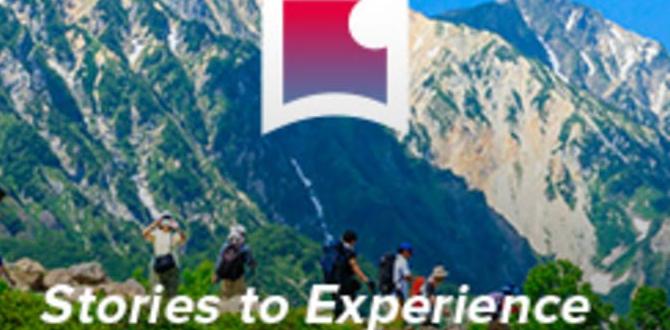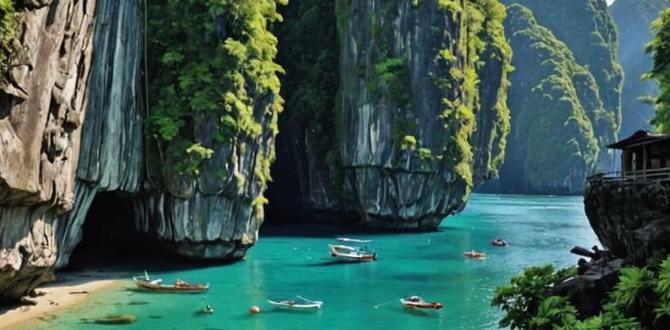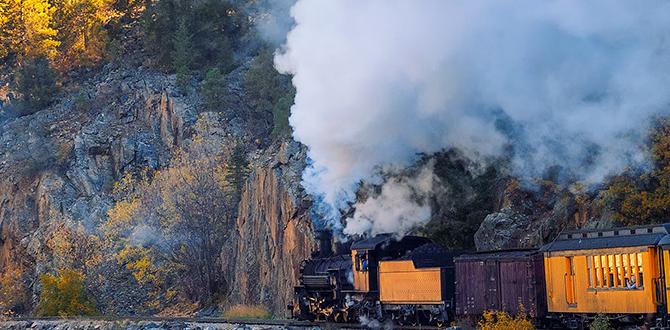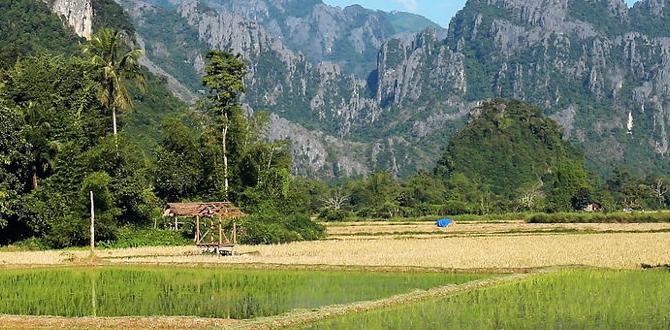Bhutan Areas To Avoid: Your Guide to Essential Safer Zones
Bhutan is renowned for its safety, with very few areas to genuinely “avoid.” The primary concerns are related to natural occurrences like landslides or flash floods, especially during monsoon season, and ethical travel practices. This guide focuses on identifying these less-traveled or potentially challenging zones and highlights the exceptionally safe, well-established tourist areas in Bhutan, ensuring a worry-free adventure. Always prioritize official advisories and local guidance for the most up-to-date safety information.
Bhutan, the Land of the Thunder Dragon, is famously serene and incredibly safe for travelers. Unlike many destinations with bustling cities that might present certain urban risks, Bhutan’s charm lies in its tranquility and deeply ingrained culture of respect and hospitality. For the most part, you won’t find neighborhoods or districts you absolutely must “avoid” in the way you might in more developed countries. However, like any travel destination, understanding potential considerations is key to a smooth and enjoyable trip. We’re here to demystify any perceived “problem” areas and instead focus on the consistently safe and welcoming zones that make Bhutan a traveler’s dream. Get ready to plan a journey filled with peace of mind, knowing exactly where to find your most comfortable and secure exploration.
Understanding Bhutan’s Safety Landscape
Bhutan’s commitment to Gross National Happiness extends to a strong emphasis on environmental protection and social well-being, which naturally translates into a very safe travel environment. Crime rates are exceptionally low, and the infrastructure for tourism is well-managed, albeit focused on sustainable, low-impact travel. When we talk about “areas to avoid,” it’s less about personal safety from crime and more about being aware of natural hazards or regions that might be less accessible or equipped for standard tourism.
Natural Hazards: Monsoon and Remote Terrain
The most significant consideration for safety in Bhutan relates to its topography and weather patterns.
Monsoon Season (June to September): This period brings heavy rainfall, which can lead to landslides and flash floods, particularly in mountainous and rural regions. Roads can be temporarily blocked, and trekking routes might become hazardous.
Remote Trekking Trails: While Bhutan offers incredible trekking opportunities, some remote trails, especially those in the higher Himalayas or less frequented areas, require experienced guides, proper acclimatization, and robust safety gear. Unprepared solo treks in these areas are not recommended.
Border Areas: While generally peaceful, it’s advisable to be aware of and respect designated border zones, which might have restricted access or require special permits.
Ethical Travel Considerations
Bhutan’s tourism policy is rooted in sustainability and the “High Value, Low Impact” principle. Understanding and adhering to this is crucial for a positive experience, rather than avoiding specific places.
Respecting Local Culture: Bhutanese culture is deeply traditional. Modest dress, respectful behavior at religious sites, and an understanding of local customs are paramount. While not an “area to avoid,” neglecting these can lead to unintentional disrespect.
Environmental Stewardship: Bhutan is committed to environmental conservation. Littering or damaging pristine natural sites can have negative impacts, and adherence to eco-friendly practices is expected.
Bhutan’s Essential Safer Zones for Travelers
Instead of focusing on what to avoid, let’s highlight the areas that are exceptionally safe, well-established for tourism, and offer easy access to Bhutan’s wonders. These are the heart of the Bhutanese travel experience, where comfort and security are virtually guaranteed.
Thimphu: The Peaceful Capital
Thimphu, Bhutan’s capital, is a unique blend of tradition and modernity. It’s remarkably peaceful for a capital city, with no traffic lights! The presence of government institutions, hotels, and established tourist amenities makes it one of the most secure and accessible areas. You’ll find excellent infrastructure, a friendly atmosphere, and plenty of cultural attractions.
Key Attractions: Buddha Dordenma, Tashichho Dzong, Folk Heritage Museum, National Memorial Chorten.
Accessibility: Well-connected by road, with hotels and services catering to tourists.
Safety: Low crime rate, well-lit main areas, easily navigable.
Paro: Gateway to the Dragon Kingdom
Paro is home to Bhutan’s only international airport, making it your likely entry and exit point. It’s a picturesque valley with significant historical and cultural sites. The infrastructure is geared towards tourism, ensuring a smooth and safe experience for visitors.
Key Attractions: Tiger’s Nest Monastery (Paro Taktsang), Paro Dzong, National Museum of Bhutan.
Accessibility: Primary gateway via air, excellent road connectivity within the valley.
Safety: High level of tourist infrastructure, regulated tourist activities, safe environment.
Punakha: The Historic Former Capital
Nestled in a lower, warmer valley, Punakha is famous for its stunning Dzong, located at the confluence of two rivers. It was Bhutan’s capital until 1955 and remains a significant cultural and administrative center. The valley offers beautiful landscapes and serene surroundings.
Key Attractions: Punakha Dzong, Chimi Lhakhang (Temple of Fertility), suspension bridges.
Accessibility: Accessible by road from Thimphu and Paro.
Safety: Relatively quiet, well-managed tourist facilities, secure for visitors.
Bumthang: Spirituality and Serenity
Often called the spiritual heartland of Bhutan, Bumthang consists of four valleys. It’s known for its numerous ancient temples, monasteries, and its deeply spiritual ambiance. While more remote than Thimphu or Paro, it is a very safe and welcoming region for those seeking a tranquil cultural immersion.
Key Attractions: Jakar Dzong, Jambay Lhakhang, Kurjey Lhakhang, Mebar Tsho (Burning Lake).
Accessibility: Accessible by flight from Paro or overland.
Safety: Peaceful, community-oriented, safe for cultural exploration.
Navigating Bhutan with Peace of Mind
When preparing for your Bhutanese adventure, focusing on comfort and preparedness will ensure you navigate any potential challenges with ease. This is especially true for travelers who may require specific personal care items.
Comfort and Convenience: Personal Care Essentials
For a stress-free journey, packing personal care items that address specific needs is essential. This ensures comfort and dignity throughout your travels, whether you’re on a long flight or exploring remote monasteries.
For Adults Requiring Incontinence Products
Bhutan’s terrain can involve a lot of walking and potential for extended periods away from immediate facilities. Having reliable adult diapers or protective underwear can significantly enhance comfort and confidence.
Discreet and Absorbent: Modern adult diapers are designed for maximum absorbency and discretion. Look for options with good odor control and a secure fit, which are crucial for long days of exploration or travel.
Breathable Materials: Choosing products made with breathable materials helps prevent skin irritation, which is important in varying climates.
Ease of Use: Products that are easy to change, even when on the go, are ideal. Consider pull-up styles for a more underwear-like feel and easier changes.
Travel Packs: Many brands offer discreet, travel-sized packs, making it easy to carry what you need without bulk.
For Parents Traveling with Children
Traveling with children always adds a layer of planning, and managing diaper changes is a common concern.
Child Diapers: Pack an ample supply of child diapers, considering that access to familiar brands might be limited, especially outside major towns. Opt for overnight or extra absorbent options for long journeys or nights.
Wipes and Changing Pads: Biodegradable wipes and portable, disposable changing pads are invaluable for on-the-go diaper changes in various settings.
Diaper Disposal Bags: Small, sealable bags are essential for discreetly carrying used diapers until proper disposal facilities can be found.
Packing Smart for Bhutan
Beyond personal care, smart packing contributes significantly to a safe and comfortable trip.
Layered Clothing: Bhutan’s climate varies greatly with altitude and season. Pack layers that can be added or removed easily.
Comfortable Footwear: You’ll be doing a lot of walking, especially to monasteries and through towns. Sturdy, broken-in walking shoes or hiking boots are a must.
Medications: Carry any personal prescription medications along with a doctor’s note. A basic first-aid kit is also advisable.
Rain Gear: Even outside the monsoon, light rain is possible. A waterproof jacket is a good idea.
Sun Protection: Sunscreen, a hat, and sunglasses are important due to the high altitude.
Frequently Asked Questions About Bhutan Safety
Here are some answers to common questions travelers have about navigating Bhutan safely.
Q1: Is Bhutan safe for solo female travelers?
A1: Yes, Bhutan is considered one of the safest countries in the world for solo female travelers. Crime rates are extremely low, and the culture is respectful. You will likely feel very secure exploring on your own.
Q2: What kind of health precautions should I take in Bhutan?
A2: It’s advisable to consult your doctor about recommended vaccinations before your trip. Drink bottled or boiled water, and be mindful of hygiene. Most tourists do not experience significant health issues, especially in the main tourist areas.
Q3: Are there any dangerous animals to worry about in Bhutan?
A3: While Bhutan is home to diverse wildlife, encounters with dangerous animals are rare, especially in tourist areas. Following your guide’s instructions when trekking and avoiding disturbing wildlife are standard precautions.
Q4: What should I do in case of a medical emergency in Bhutan?
A4: In any emergency, contact your tour operator immediately, as they are equipped to handle such situations and liaise with local authorities and medical centers. Major towns have basic medical facilities.
Q5: Is it safe to drive in Bhutan?
A5: Driving in Bhutan can be challenging due to winding mountain roads and potential natural hazards like landslides. It’s highly recommended to hire a car with a local driver who is experienced with Bhutanese roads. Tourists typically do not drive themselves.
Q6: What is the general attitude towards tourists in Bhutan?
A6: Bhutanese people are known for their warmth, hospitality, and genuine curiosity towards visitors. You will generally find locals to be very friendly and helpful, contributing to a safe and welcoming atmosphere.
Q7: How can I stay informed about any safety advisories during my trip?
A7: Your tour operator is your primary source for real-time safety information. They work closely with local authorities and tour guides who are aware of any developing situations, such as road closures due to weather.
Bhutan’s Ethical Tourism Policy: A Pillar of Safety
Bhutan’s unique tourism policy is a cornerstone of its safety and preservation efforts. Understanding this policy enhances your experience and contributes to the nation’s well-being.
The “High Value, Low Impact” Philosophy
Bhutan deliberately limits the number of tourists to maintain its cultural and environmental integrity. This is achieved through a mandatory Minimum Daily Package Rate (MDPR) that guests must pay. This package typically includes:
Accommodation
All meals
Licensed guide services
Internal transport
All internal taxes and charges
A sustainable development fee (SDF)
This policy ensures that tourism benefits the nation broadly and discourages mass tourism, which can strain resources and negatively impact local life. By adhering to these guidelines, you are directly contributing to the conservation of Bhutan’s natural beauty and unique culture.
Local Guides: Your Safety and Insight
Hiring a licensed Bhutanese guide is not just a requirement; it’s an invaluable asset for safety and understanding.
Local Knowledge: Guides are intimately familiar with the terrain, local customs, weather patterns, and potential hazards.
Emergency Preparedness: They are trained to handle minor emergencies and know how to contact relevant authorities if a situation escalates.
Cultural Bridge: Guides provide deep insights into Bhutanese culture, history, and daily life, enriching your experience.
* Logistical Support: They manage transportation, meals, and accommodation, allowing you to relax and focus on enjoying your journey.
Conclusion: Embrace Bhutan with Confidence
Bhutan stands out not for its “areas to avoid” but for its pervasive sense of peace and security across the entire kingdom. The primary “challenges” are environmental, like the monsoon rains, which are easily managed with proper planning and by heeding local advice, usually provided by your indispensable tour guide. The nation’s deliberate tourism policy, focused on sustainability and cultural preservation, ensures that visitors experience the best Bhutan has to offer in a controlled and respectful manner.
For travelers, this translates into a worry-free adventure. By choosing well-established tourist hubs like Thimphu, Paro, Punakha, and Bumthang, you are immersing yourself in areas with excellent infrastructure and a welcoming atmosphere. Packing smart, including essential personal care items for comfort and dignity, further enhances your ability to fully engage with the journey. Whether you’re a solo adventurer, a family with young children, or an individual seeking a serene escape, Bhutan’s commitment to safety and well-being is a promise delivered. Embrace the Land of the Thunder Dragon with confidence, knowing that your journey will be as comfortable and secure as it is unforgettable.







